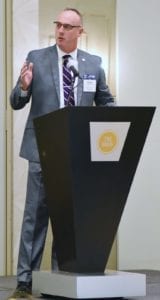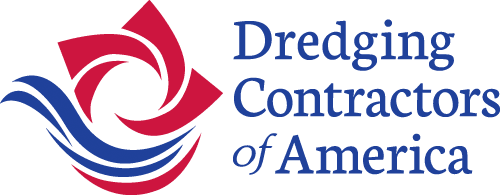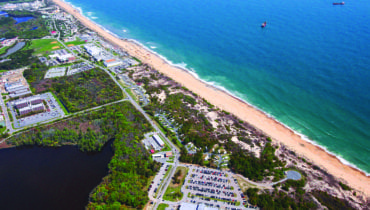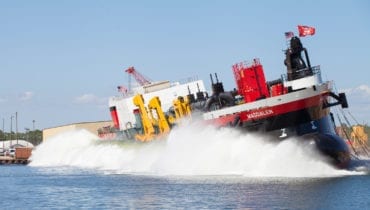Good Morning, and thank you for inviting me here today to open-up the conference. This is my first time addressing the Western Dredging Association (WEDA), and I am honored to be here.

It all starts with dredging, and President Donald J. Trump is backing it up with critical legislative measures. As I will address later in my remarks– the U.S. dredging companies are truly American companies, spending billions of dollars building all of our ships in American shipyards and staffing our ships with American officers a crew. And, we’ve done it this way since the beginning of the Republic because we’re the most efficient, it’s the right thing to do and integral to the importance of our country’s national and economic security. As companies, we proudly serve as part of the United States Merchant Marine.
Before I begin, I would like to say a few words about the Virginia Ports Authority. After all, we are in Norfolk. Virginia’s ports serve as a shining example of the critical importance of dredging and how it’s intertwined with the wider policy discussion on port infrastructure.
Virginia Ports
John Reinhart is the CEO & Executive Director of the Virginia Ports Authority. I have known John for many years; he’s an excellent leader, manager and has tremendous foresight. He’s a great American and a good friend. Prior to becoming the CEO & ED of Virginia Ports, John Reinhart served as the CEO of Maersk Line, Limited. During his tenure he managed through the Somali pirate attacks on the MV MAERSK ALABAMA. John made sure family members were kept up to date, worked directly with our military leaders and made sure that our U.S. Mariners were brought home safely. It’s hard to believe that it has been nine (9) years since the ALABAMA pirate attacks. You’ll all see and hear from Mr. Reinhart later today, as he will be our keynote speaker at today’s luncheon.
The expansion at Virginia International Gateway and Norfolk International Terminals is on schedule and on budget. All 26 of the new rail-mounted gantry cranes for Virginia International Gateway have been delivered and are being prepped for service.
I would like to offer congratulations to the Virginia General Assembly for approving $350 million for port infrastructure and improvement earlier this month.
We are all waiting with you John Reinhart for the Army Corps of Engineers Chief’s report that would green light Norfolk Harbor’s commercial shipping channels to 55 feet deep. It would be the only port on the East Coast with an authorized depth of 55 feet.
It all starts with dredging, what Virginia has done under Mr. Reinhart’s leadership is remarkable. Virginia has formed outstanding public – private partnerships and forged ahead with key infrastructure improvements.
The intermodal connections in and around Virginia’s ports are impeccable. Thirty-six (36) percent of Virginia’s inbound and outbound freight is carried by rail. Indeed, it is the largest volume of rail connects of any port on the East Coast.
Virginia has planned well. In 2016, Virginia was awarded a FASTLANE grant of $165 million toward a $1.4 billion expansion and improvement of road and rail connections serving what is known as the “Atlantic Gateway.” In addition, Transurban and CSX Transportation are contributing $565 million, with $710 million coming through state of Virginia transportation funds.
Virginia has taken advantage and put to good use the Federal Marine Highway program’ grants investing in cold cargo handling and storage. At the port authority’s Richmond Marine Terminal (RMT), Virginia added a portable, 40-plug central power unit that can be mounted on the Richmond Express barge and a specialized, heavy-lift forklift that will help to make the Port of Virginia a destination for cold cargo.
Always forward thinking, John Reinhart knows the importance of beneficial use of dredge material. Virginia is planning for the Craney Island Extension project that would save costs by utilizing dredge material to create space for a container terminal that could handle up to 3-million containers per year.
National Level Activities
Let me turn to federal Funding on a National Level. There is a lot of activity on Capitol Hill and from the White House that directly impacts dredging. This includes funding for channel deepening and widening, coastal restoration, and beach re-nourishment.
Let me highlight some of the activity:
- The FY18 USACE Work Plan is now available. It was released about two weeks ago. This is known as the Omnibus Spending Bill Work Plan that President Trump signed this spring.
- The U.S. House of Representatives has passed its Energy & Water Appropriations Bill;
- Yesterday, the U.S. Senate approved a $145 billion spending bill to fund the Energy Department and veterans’ programs for the next budget year. The bill includes $43.8 billion for energy and water programs, including funds flood-control projects, and addresses regional ports and waterways.
- We are all waiting for the 2017 Disaster Supplemental Work Plan to be released by the Army Corps of Engineers – it should be coming soon. This bill was signed into law by President Donald Trump on February 8, 2018.
WRDA Update
- House of Representatives passed H.R. 8, the Water Resources Development Act (WRDA) on Tuesday, June 6.
- The Senate is expected to take up S. 2800, America’s Water Infrastructure Act of 2018 after the July 4th holiday recess.
DCA Working with the Army Corps of Engineers
- Member companies with the Dredging Contractors of America recently completed two solid days of work with Army Corps at The National Dredge Meeting and the Industry/Corps Hopper Dredge Management Group discussion forum.
- We are on track and working closely together. We have a good private sector working relationship with the Army Corps of Engineers.
Investment by the Private Sector Dredging Companies
We all know the importance of public-private partnerships. We in the private sector dredging industry are doing our best to make America Great. The U.S.-flagged dredging fleet totals more than 400 dredges. In 2017, the U.S.-flagged hopper dredging fleet capacity increased by 34% with the addition of two large new-build vessels built in U.S shipyards by U.S. workers. In fact, the U.S. dredging industry is amid a $1 billion-plus capital construction program. New investments include four large cutter suction dredges, two large hopper dredges and approximately 50 barges built in shipyards across the U.S. including Eastern Shipbuilding, C&C Marine Shipyard, Corn Island Shipyard, Conrad Shipyard and Halimar Shipyard.
The companies that have recently built and are building dredges include:
- Great Lakes Dredge and Dock Company: $160 Million for the 14,800 cy Hopper Dredge ELLIS ISLAND (Eastern Shipyard, Panama City FL);
- Weeks Marine: $110 Million for the 8,550 cy Hopper Dredge MAGDALEN (Eastern Shipyard, Panama City, FL), and $60 Million the 30-inch Cutter-suction Dredge JS CHATRY is currently under construction (C&C Shipyard, Belle Chasse, Louisiana);
- Manson Construction: $40 Million for the 30-inch Cutter-suction Dredge ROBERT M. WHITE (Halimar Shipyard, Morgan City, Louisiana);
- Callan Marine: $60 Million for the 32-inch Cutter-suction Dredge GENERAL MACARTHUR (currently under construction at C&C Shipyard, Louisiana)
- Jay Cashman, Inc.: Recently announced plans to build up to two 5,000 cy Hopper Dredges.
U.S. Flag Merchant Marine and Jones Act
In closing, the dredging industry is an integral part of the 500,000 jobs supported by the U.S. maritime industry. Investment decisions are reliant on the perceived permanence of the Jones Act – the single, most fundamental domestic maritime law that has enabled the overall U.S. maritime industry to generate $100 billion in annual economic output, $30 billion in annual employee compensation, $11 billion in annual tax revenues, and $46 billion in value-added.
I am a big supporter of a strong and vibrant U.S. Merchant Marine, of which the U.S.-flag dredging industry plays a vital role. I believe in my companies and their business models of building ships and vessels in U.S. shipyards, registering their vessels in the United States and staffing them with American officers and crew.
Thank you.
Prepared Remarks
of
William P. Doyle, CEO & Executive Director
Dredging Contractors of America
2018 Western Dredging Association (WEDA) Summit & Expo
Norfolk, Virginia
June 26, 2018
Photo courtesy of Steve Richardson, World Dredging Magazine







